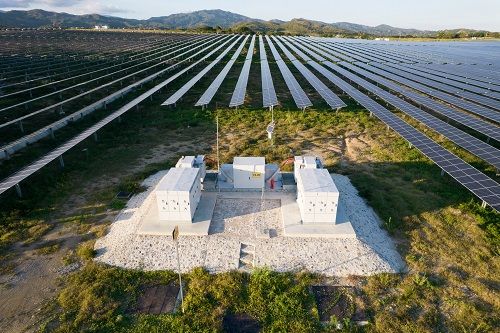Renewable energies are facing golden times. Although this is now considered a truism, the opportunities are still often underestimated. This is because politicians are driving the energy turnaround forward with billions, while at the same time the demand for electricity is growing and the production costs for renewables are falling ever lower. "In view of persistently high electricity prices, the production of green electricity is becoming increasingly lucrative and thus less dependent on government subsidies", says Markus W. Voigt, CEO of the aream Group.
In the coming years and decades, not only the demand for electricity will grow strongly, but also the demand for electricity from renewable energies. One driver is politics. The European Union's Green Deal aims to reduce CO2 emissions by at least 55 percent by 2030, by which time the share of renewables is to rise to 45 percent. To achieve this, the EU expects to invest an additional 260 billion euros per year. By 2050, the EU aims to be the world's first carbon-neutral economic bloc. In the wake of the Ukraine war, the Union has also launched the REPowerEU plan, which is intended to further accelerate the transformation.
Politicians are putting on the pressure - but so is the market. "Despite all efforts to increase energy efficiency, demand for electricity will continue to rise until 2050", explains Voigt. This is due not only to economic growth, but also to megatrends such as digitization and e-mobility. The energy transition means electrification for the purpose of climate protection and thus increased demand for green electricity in particular. And finally, investors are increasingly looking for ESG-compliant investments.
As a result, forecasts predict that gross electricity generation in Germany will increase from 600 TW in 2022 to 800 TW within ten years and approach the 1000 TW mark in 2050. Whereas renewable energy sources still accounted for 40 percent last year, this is expected to rise to 85 percent by 2050. Wind and solar energy will then contribute around 60 percent. "Photovoltaics and wind farms have become the clearest and most stable drivers of the transformation process in Germany and Europe", says Voigt.
At the same time, renewables are increasingly gaining price competitiveness over fossil fuels. This is shown by the development of the levelized cost of electricity. Whereas ten years ago they were still over 150 euros per MWh for solar energy, in the first half of 2022 they fell to just under 40 euros. For onshore wind, the drop was over a third to 46 euros.
"It is true that costs have risen recently due to the inflation of materials and transport", explains Voigt. "But at the same time, the commodity price boom has driven up the cost of coal and gas-fired power plants even more." Wind or solar farms still have a cost advantage of about 40 percent, he says. "Strong competitiveness means that government subsidies for renewables are becoming less and less important", Voigt says.
PRESSEKONTAKT:
Leandra Kiebach
T: +49 (0)211 30 20 60 4-2
E: lk@aream.de
